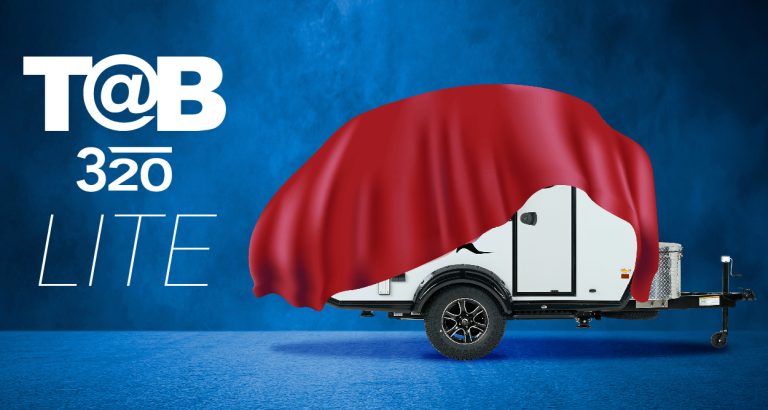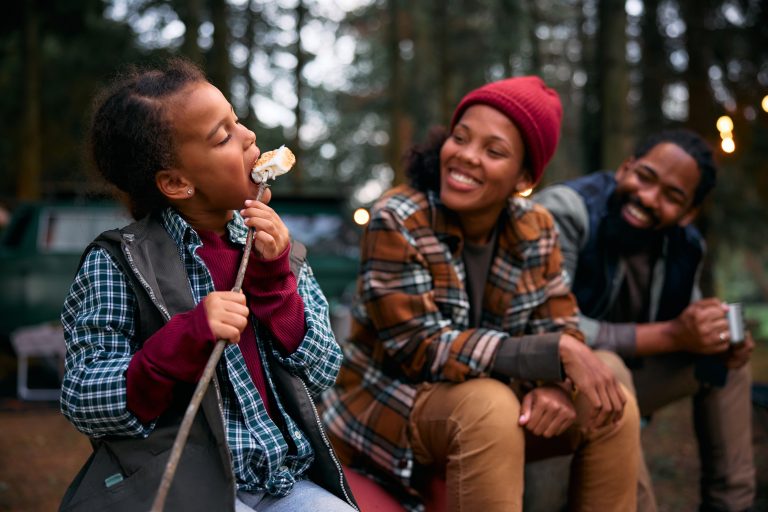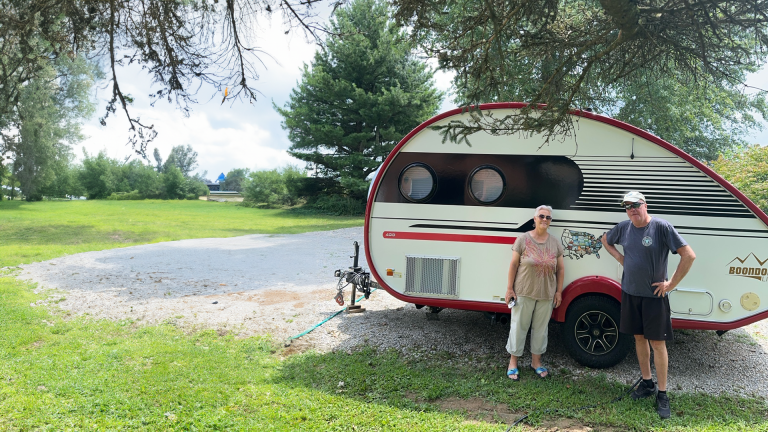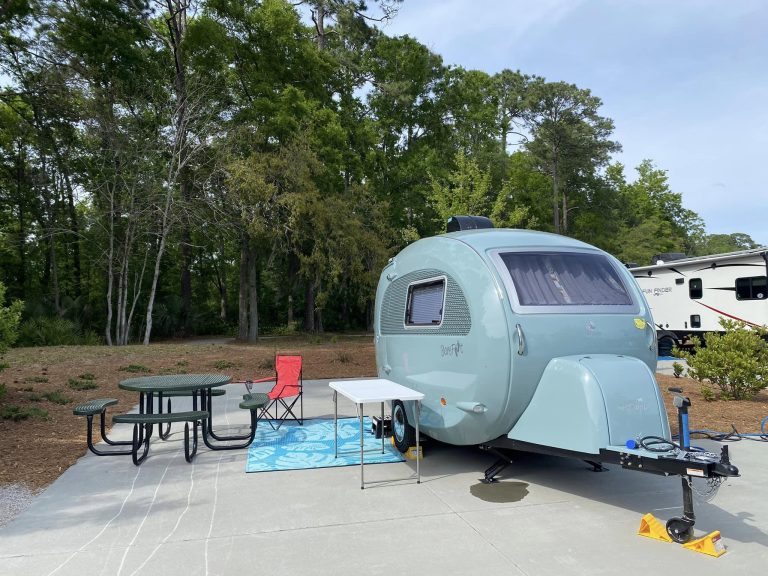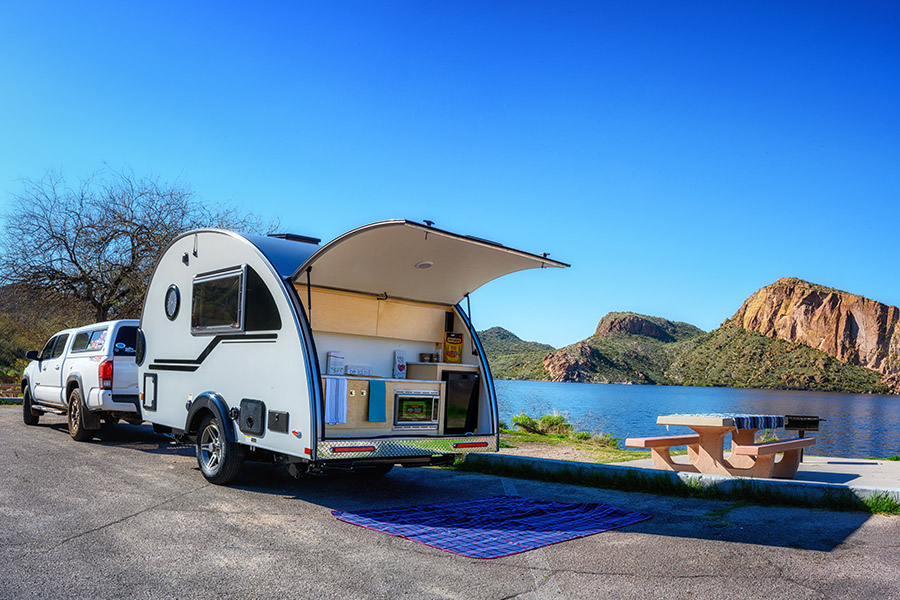It’s not easy being an eco-friendly RVer. All those strategies, like composting or recycling, that you may have followed at your bricks-and-sticks home aren’t as easy to do when you’re on the road.
But there are still ways to protect the planet and conserve natural resources even when journeying from one location to another. We’ve rounded up a dozen ideas for you to consider before you head out on your next RV adventure.
Spending time at one of the many national parks? Read this article for ways to green your visit and leave the park clean and intact for the next generation.
1. Use eco-friendly food containers and bags.
Plastic wrap and bags may make food storage easier, but they also do a number on Mother Earth. They are made from crude oil, a non-renewable resource, and they won’t degrade in a landfill for a really, really long time — say, several hundred years.
Fortunately, there are options to keep your food and the planet protected, such as silicone reusable food storage bags or washable storage containers. Instead of plastic wrap, try greener alternatives such as those made from cotton fabric infused with beeswax, suggests Life On Route. Just wash, dry, and use again.
For your fresh fruits and vegetables, use Ecowaare’s reusable produce bags. You can even use them when shopping instead of the bags at the produce counter since they allow the cashier to scan produce tags and stickers right through the bag. (For more food storage products, check out this post from EcoFriendly Habits.)
Speaking of shopping, bring along your own reusable grocery bags instead of using plastic store bags at the checkout counter. Too many store bags cluttering your camper. Bring them to the store since many retailers now have designated bins where you can leave them.
2. Recycle while on the road.
Your recycling habits don’t have to stop because you’ve left home. With some advance planning and a little research, you can still put your recyclables to good use instead of in the trash.
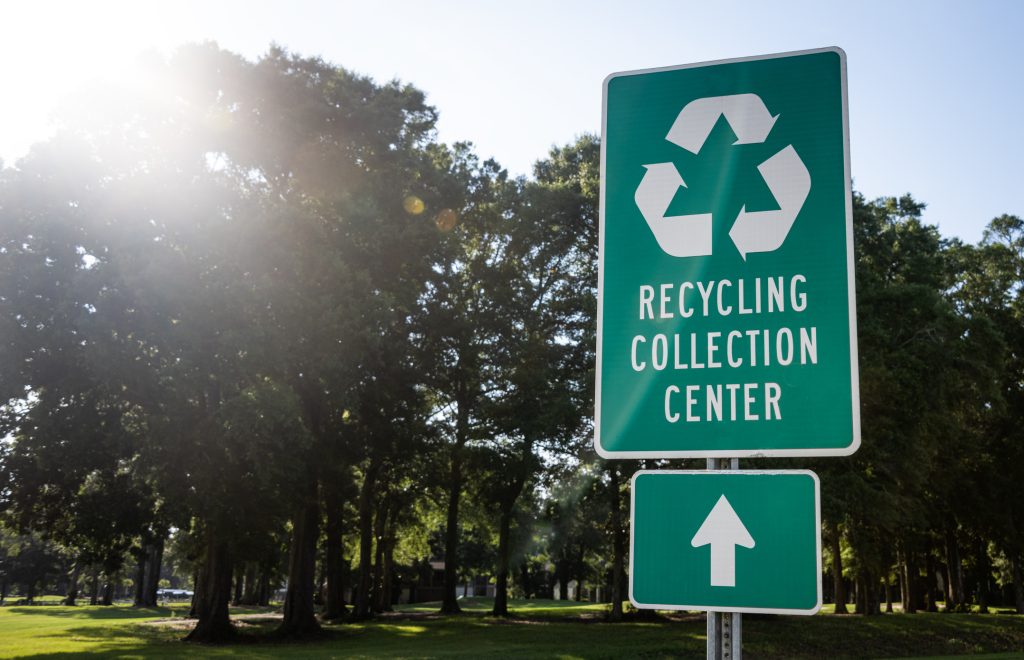
If you’re staying at a campground, call ahead to find out if they have recycle bins. If not, check online at Recycle Finder, How2Recycle, I Want To Be Recycled, or Bag and Film Recycling for the closest drop-off site to where you’ll be staying.
Then designate a few bins to hold the cleaned recyclables until you can dispose of them. Most places have separate containers for paper and plastic, so doing it ahead of time is more efficient. Not sure what can be recycled? Campendium has a great post on the subject, but plastics with symbols that include the numbers 1, 2, and 5 are the most commonly accepted types, along with paper and cardboard products and tin, steel, aluminum, and glass containers. Don’t include plastic store bags since they can cause problems with the machinery at recycling facilities.
3. Improve your fuel economy.
Before you head off on the road, make sure your camper and tow vehicle are ready to roll by having all the needed services done. Improperly aligned or inflated tires, a dirty air filter, or a poorly maintained engine can negatively affect fuel consumption and your wallet.
Next, watch the weight. The more you pack into your camper, the less fuel-efficient your tow vehicle will be, says The General RV. One way to keep the weight down is to pare your packing to only what you need. Then, empty your camper’s holding tanks before taking off on the next leg of your trip.
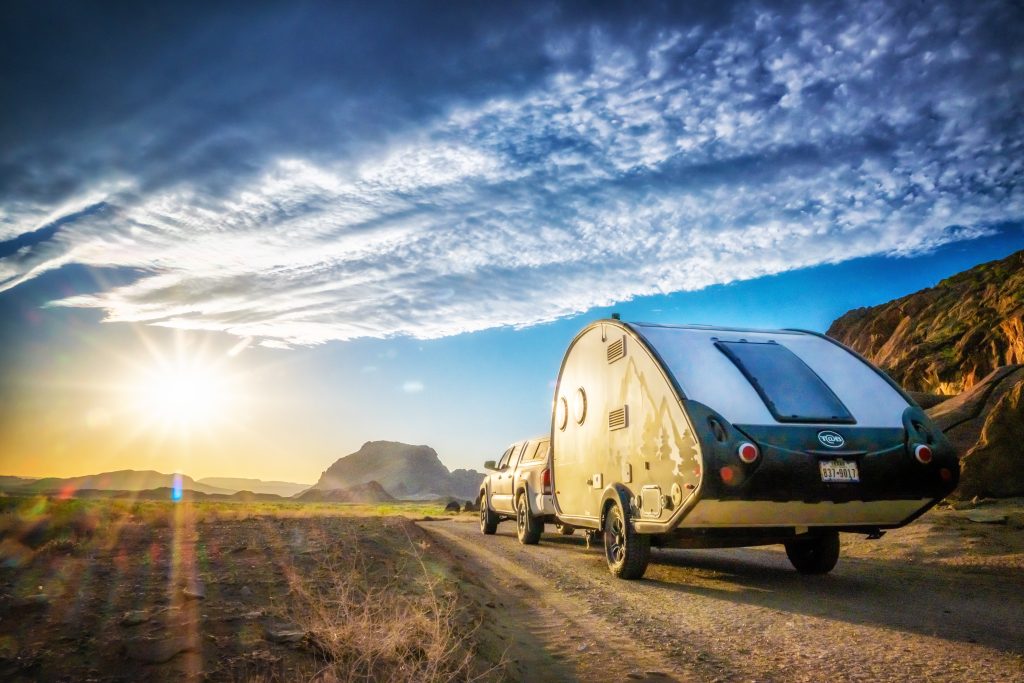
Finally, review your travel plans. While crisscrossing the country sounds exciting, it can also use up a lot of fuel. And if prices are high, it can also break the bank. Consider travel plans centered on a particular area, or at a minimum, use a travel app to find the best route to your next destination. As for “taking the road less traveled,” while the adventuresome part of you might welcome the surprises along the way, you might also have to backtrack because it didn’t take you exactly where you wanted to go.
4. Use Eco-Friendly Transportation.
So far, your focus has been all about energy conservation. But once at your stop, it’s time to expend a little of that energy in the form of physical activity by using alternate forms of transportation. Depending on where you are, consider biking, skating, or using a scooter to explore the location. Just make sure you’re properly outfitted and that you have a way to secure your equipment if you decide to stop along the way.
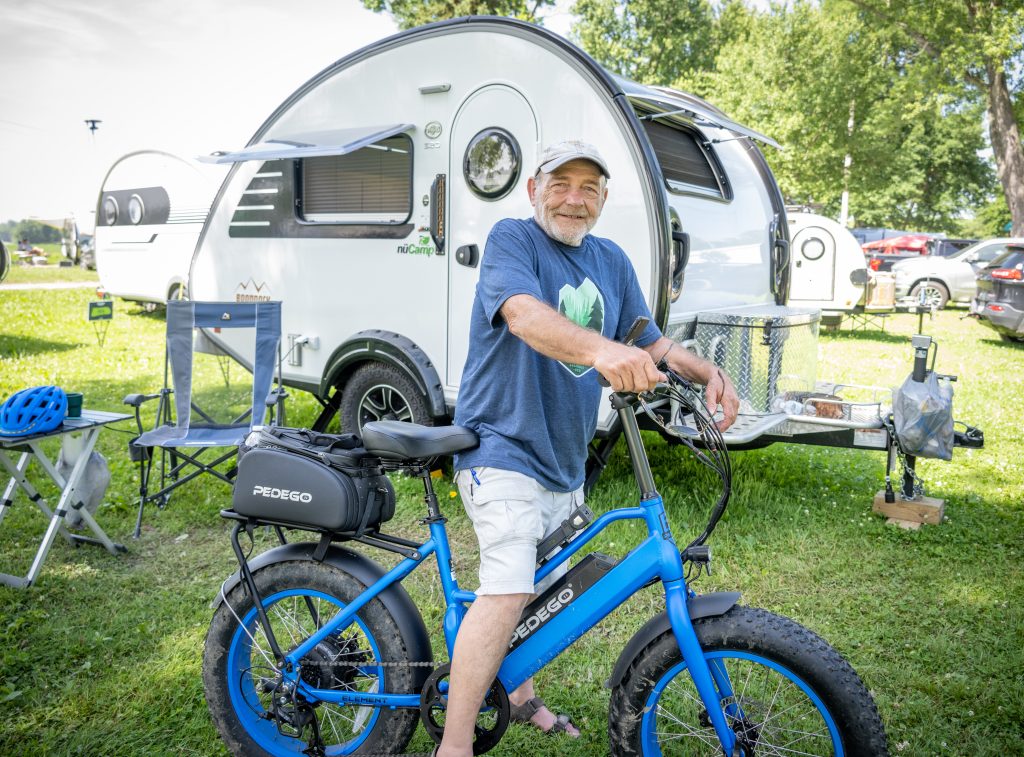
- Biking? You’ll need a helmet and a few other items to stay safe. Here’s a list from the Bicycle Helmet Safety Institute.
- Skating? Roller Skate Nation has a checklist of what to wear.
- Electric scooter? Web Bike World has a rundown of recommended safety gear.
- Looking for lock options? Depending on what you want to secure, you can use a U-lock, a cable or chain lock, a disc lock, a grip lock, or a ring lock.
Not up for that much activity? Then look into public transport. Some places have free trolleys or bus services that hit the points of interest in an area. Check the website of the local visitor’s bureau for information. Visiting a national or state park? There may be a trolley or shuttle service from the parking lot that will give you a tour of the park without using your own fuel.
5. Visit Eco-Friendly Campgrounds and Destinations.
Not all campgrounds are environmentally friendly, so if you want to help out Mother Nature while benefiting from what she provides, try to find eco-friendly ones. According to Boondockers Welcome, some things to look for are LED fixtures and solar power for heating swimming pools.
According to The National Association of RV Parks and Campgrounds, for a park to be recognized as a Plan-It Green Friendly Park, it must meet at least nine of the 16 eco-friendly criteria. KOA has a similar program, awarding Kamp Green certification to a campground that reaches and maintains a minimum of 29 points.
6. Shop local.
Not only will this benefit the local farmers and other cottage industries, but it also means you’ll be buying fresher products that haven’t had to travel hundreds of miles before reaching store shelves. And it gives you a chance to enjoy homegrown fruits, vegetables, and other items right from the source, says The Dyrt.
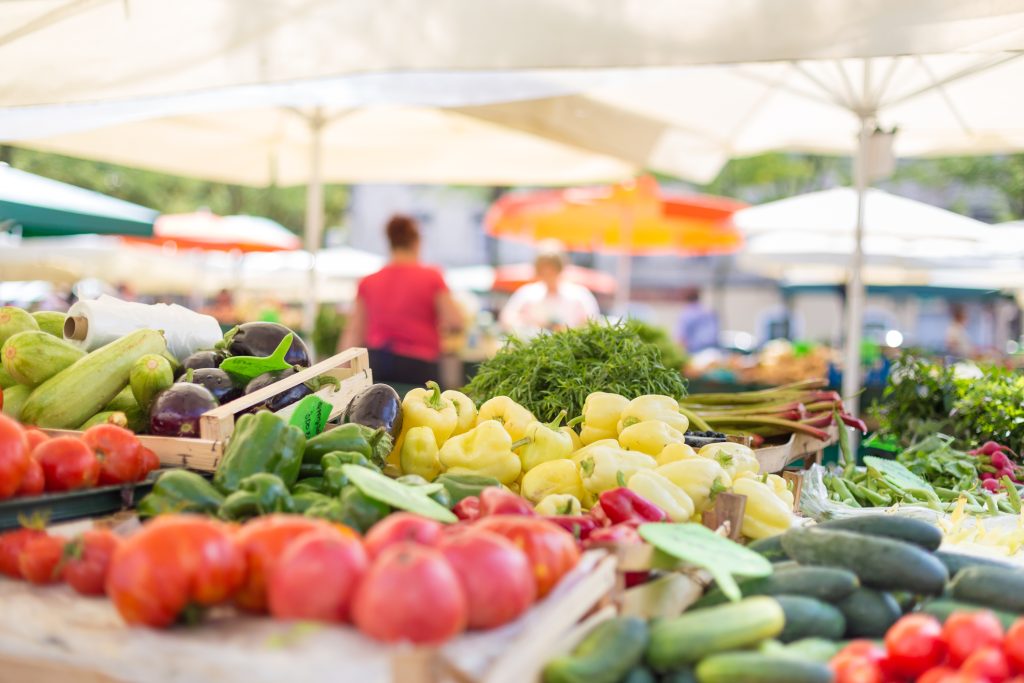
You can use the USDA’s National Farmers Market Directory or Local Harvest site to find a farmers market close to you. Or just get off the highway and drive along country roads, keeping an eye out for farmstands!
7. Go solar.
nuCamp teardrop trailers and truck campers now come standard with rooftop solar, but if your RV doesn’t already have solar panels, you might want to think about adding them to supplement the power provided by your generator or campground electrical service. Not to mention give you more boondocking options, says Harvest Hosts.
While you’re at it, invest in solar chargers for your personal devices. ZDNet, Digital Camera World and GearLab provide a rundown of the various types.
8. Insulate your RV.
Whether you’re traveling in frigid weather or triple-digit temps, adding some extra insulation to your RV can help reduce your need for heat or air conditioning. Boondockers Welcome lists insulated walls, duo-glazed windows, and RV skirts that will keep the cold (or heat!) out. Then put some thought into your parking plans. In hot weather, aim for shady spots to reduce the draw on your A/C. When the mercury drops, give your RV as much sunlight as possible. Finally, close the shades or curtains to keep the hot summer sun from heating up your camper’s interior, while in cold weather, insulated curtains can keep any drafts out.
9. Be a green cleaner.
Using earth-friendly, biodegradable cleaners keep harsh chemicals off your hands and out of the water. But sometimes, it’s hard to distinguish between hype and truth. Life On Route recommends looking for renewable resources (i.e., solvents from citrus and vegetable oils) in the ingredient list, low VOC content, and effectiveness even when used with cold water.
The EPA manages the Safer Choice program that certifies those products that contain safer ingredients for human health and the environment, and the Design for the Environment (DfE) certification for antimicrobial products, such as disinfectants and sanitizers. Use the Safer Choice and DfE-certified tools to find xthe products that will be safe for you, the environment, and your camper.
As for what to clean with, skip the paper towels in favor of rags or microfiber cleaning cloths. Use, wash, dry, and they are ready for the next round!
10. Buy secondhand gear to help the planet and save your cash.
Depending on what you’re looking for, you can save money and help keep items out of the landfill by buying secondhand. The General RV suggests checking local thrift shops or Facebook Marketplace, as well as retailers such as REI Co-Op Used Gear, The Northface Renewed, Patagonia Worn Wear, and Switchback Gear Exchange. If you’re attending a nuCamp rally, there are often swap meets where owners sell their gently used camping equipment.
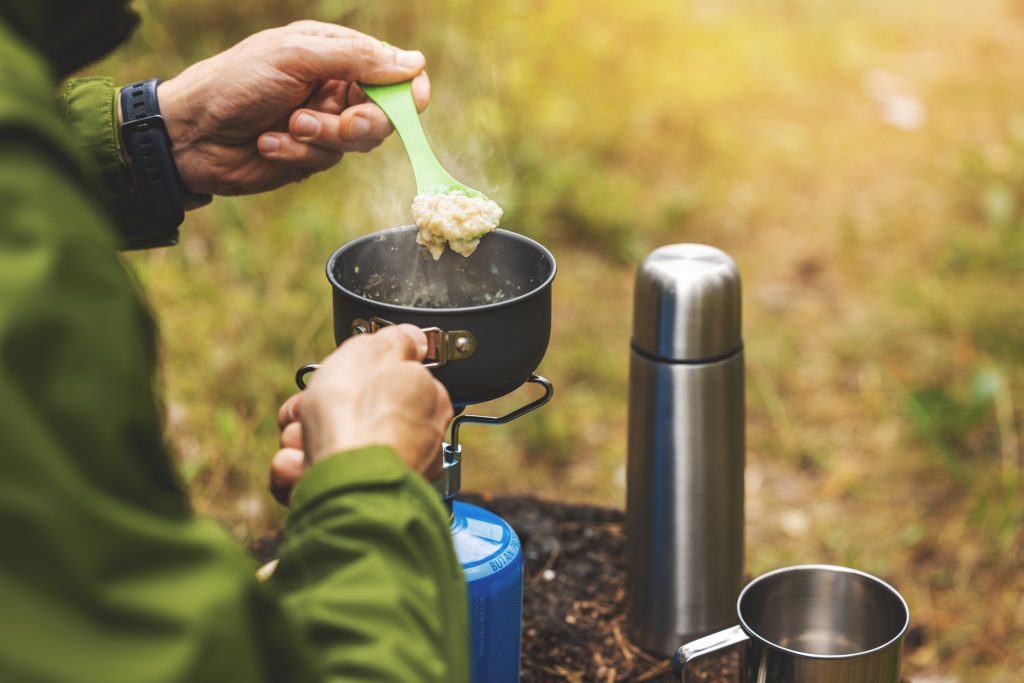
11. Follow the 7 Leave No Trace principles.
This is an obvious way to ensure that, as you travel the planet, you leave it in good shape. Leave No Trace provides innovative education, skills, research, and science to help people care for the outdoors, all based on seven core principles.
- Principle 1: Plan Ahead and Prepare—Accomplish trip goals safely and enjoyably while minimizing damage to the land.
- Principle 2: Travel & Camp on Durable Surfaces—Move through natural areas while avoiding damage to the land or waterways.
- Principle 3: Dispose of Waste Properly—Follow recommendations for disposing of human waste as well as personal products and any trash or garbage, i.e., “Pack it in, Pack it out.”
- Principle 4: Leave What You Find—Allow others a sense of discovery by leaving rocks, plants, archaeological artifacts, and other objects of interest as you find them.
- Principle 5: Minimize Campfire Impacts—Use lightweight, efficient camp stoves instead of campfires because they are fast, flexible, and eliminate firewood availability as a concern in campsite selection.
- Principle 6: Respect Wildlife—When observing wildlife and plant life, look, don’t touch (or pick, in the latter case). This is their home, not yours, so keep your distance.
- Principle 7: Be Considerate of Others—Maintain courtesy toward other visitors so everyone can enjoy their outdoor experience. That means keeping the noise level down, your pets under control, and when you’re departing, Leave No Trace.
Want more ideas on improving your Eco-IQ? Check out these other posts on our blog!
Taking Your “Green” Goals on the Road
Recent Articles
